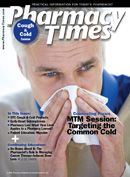Publication
Article
Pharmacy Times
What Time Limit Applies to a Pharmacy Lawsuit?
Author(s):
When a dispensing error is made by a nonpharmacist, which results in a lawsuit against the pharmacy as well as the employee, what statute of limitations applies to establish the time limit for filing the claim—the 2-year standard for a medical malpractice claim, or the 3-year term applicable to an ordinary negligence claim?
Dr. Fink is professor of pharmacy law and policy at the University of Kentucky College of Pharmacy, Lexington.
Issue of the Case
When a dispensing error is made by a nonpharmacist, which results in a lawsuit against the pharmacy as well as the employee, what statute of limitations applies to establish the time limit for filing the claim-the 2-year standard for a medical malpractice claim, or the 3-year term applicable to an ordinary negligence claim?
Facts of the Case
A patient presented a prescription at a pharmacy in the Midwest requesting dispensing of Mirapex 0.125 mg. When subsequently obtaining a refill of the prescription, the patient received medication dispensed by a nonpharmacist employee who was not acting under the supervision of a pharmacist. The employee erroneously supplied the 1.0-mg dosage form of the product-8 times the requested strength.
The patient consumed 1 superpotent tablet in the afternoon and 2 in the early evening. She became dizzy, agitated, and suffered nausea in the evening. During the night, she lost consciousness, so she was taken to a hospital emergency room where those symptoms were determined to be based on an overdose of the medication.
The patient and her husband filed a lawsuit against the pharmacy and the nonpharmacist employee who dispensed the incorrect strength of the product. The complaint filed with the court to launch the lawsuit advanced a number of legal theories to support the claim for compensation for alleged damages.
Before the trial began, the defendants, the pharmacy and the employee, asked the trial court judge to dismiss the lawsuit. They argued that because the incident unfolded at a licensed health care facility or agency, it was a claim for medical malpractice rather than a suit for ordinary negligence. Accordingly, they further argued that the applicable statute of limitations should be the 2-year period applicable to medical malpractice claims, not the 3-year limit used for an ordinary negligence case. Their motion for summary judgment asked the judge to rule that the complaint filed by the plaintiffs "failed to state a claim on which relief could be granted." For the defendants to prevail on their motion, the judge must conclude that the claims of the lawsuit are clearly unenforceable. Without issuing a statement about the basis for his ruling, the trial court judge denied the motion, ruling that the trial should proceed.
The defendants appealed that decision to the intermediate court of appeals for the state where the decision of the trial court judge was affirmed-the trial could go forward because the plaintiffs had met the 3-year statute of limitations for an ordinary negligence lawsuit.
Still feeling that the appropriate statute of limitations was the 2-year period applicable to a medical malpractice case, the defendants took the case to the state's supreme court. The pivotal issue at that level of the judicial system was what statute of limitations should apply-the 2-year or the 3-year term.
The Court's Ruling
The Supreme Court ruled that the 3-year period was the correct period for a case like this and sent the matter back to the trial court for further proceedings.
The Court's Reasoning
The Supreme Court reviewed the wording of the statutes enacted by the legislature that had established the differential time periods for the 2 types of cases. The court concluded that, for a case to be viewed as a medical malpractice case, and therefore subject to the shorter statute of limitations, it must meet 2 criteria:
1. It must allege an action that occurred within the course of a professional relationship.
2. It must pose questions of medical judgment outside the realm of common knowledge or experience.
Element 1 was expanded by the statute beyond the traditional notion that medical malpractice claims applied only to cover the actions of physicians and surgeons. The legislature had added to its coverage a "claim brought against a licensed health care facility or agency" as defined in a specific section of the state's public health code. The licensure requirements for pharmacies appear in a different section of the code, so the court concluded that pharmacies were not covered by the shorter statute of limitations applicable to medical malpractice claims.
With regard to the portion of the lawsuit filed against the individual nonpharmacist employee who had actually dispensed the medication, the court also concluded that the claim was one for ordinary negligence, not for medical malpractice. So, for that portion of the lawsuit, the 3-year statute of limitations was also appropriate.







